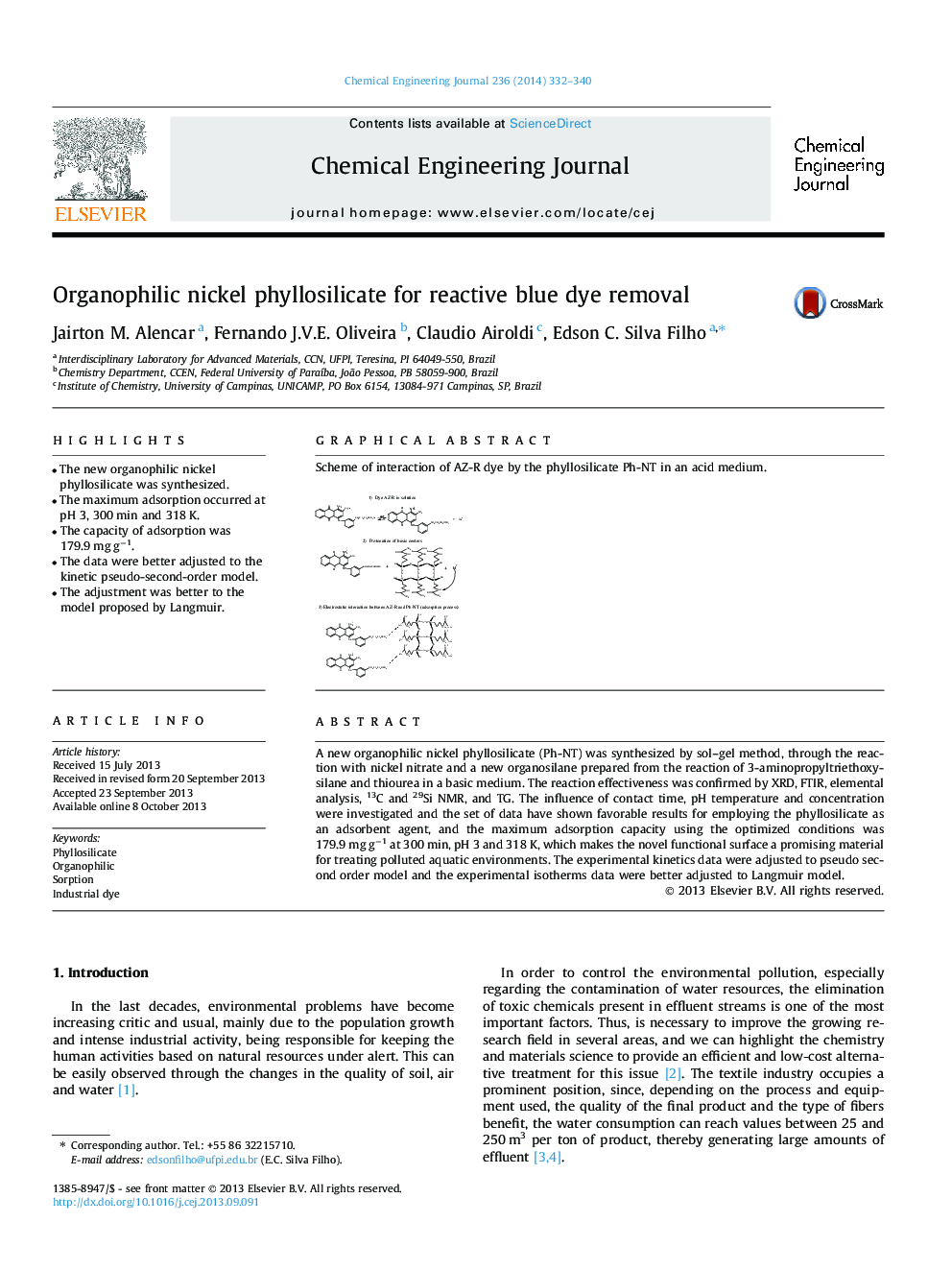| Article ID | Journal | Published Year | Pages | File Type |
|---|---|---|---|---|
| 147991 | Chemical Engineering Journal | 2014 | 9 Pages |
•The new organophilic nickel phyllosilicate was synthesized.•The maximum adsorption occurred at pH 3, 300 min and 318 K.•The capacity of adsorption was 179.9 mg g−1.•The data were better adjusted to the kinetic pseudo-second-order model.•The adjustment was better to the model proposed by Langmuir.
A new organophilic nickel phyllosilicate (Ph-NT) was synthesized by sol–gel method, through the reaction with nickel nitrate and a new organosilane prepared from the reaction of 3-aminopropyltriethoxysilane and thiourea in a basic medium. The reaction effectiveness was confirmed by XRD, FTIR, elemental analysis, 13C and 29Si NMR, and TG. The influence of contact time, pH temperature and concentration were investigated and the set of data have shown favorable results for employing the phyllosilicate as an adsorbent agent, and the maximum adsorption capacity using the optimized conditions was 179.9 mg g−1 at 300 min, pH 3 and 318 K, which makes the novel functional surface a promising material for treating polluted aquatic environments. The experimental kinetics data were adjusted to pseudo second order model and the experimental isotherms data were better adjusted to Langmuir model.
Graphical abstractScheme of interaction of AZ-R dye by the phyllosilicate Ph-NT in an acid medium.Figure optionsDownload full-size imageDownload as PowerPoint slide
